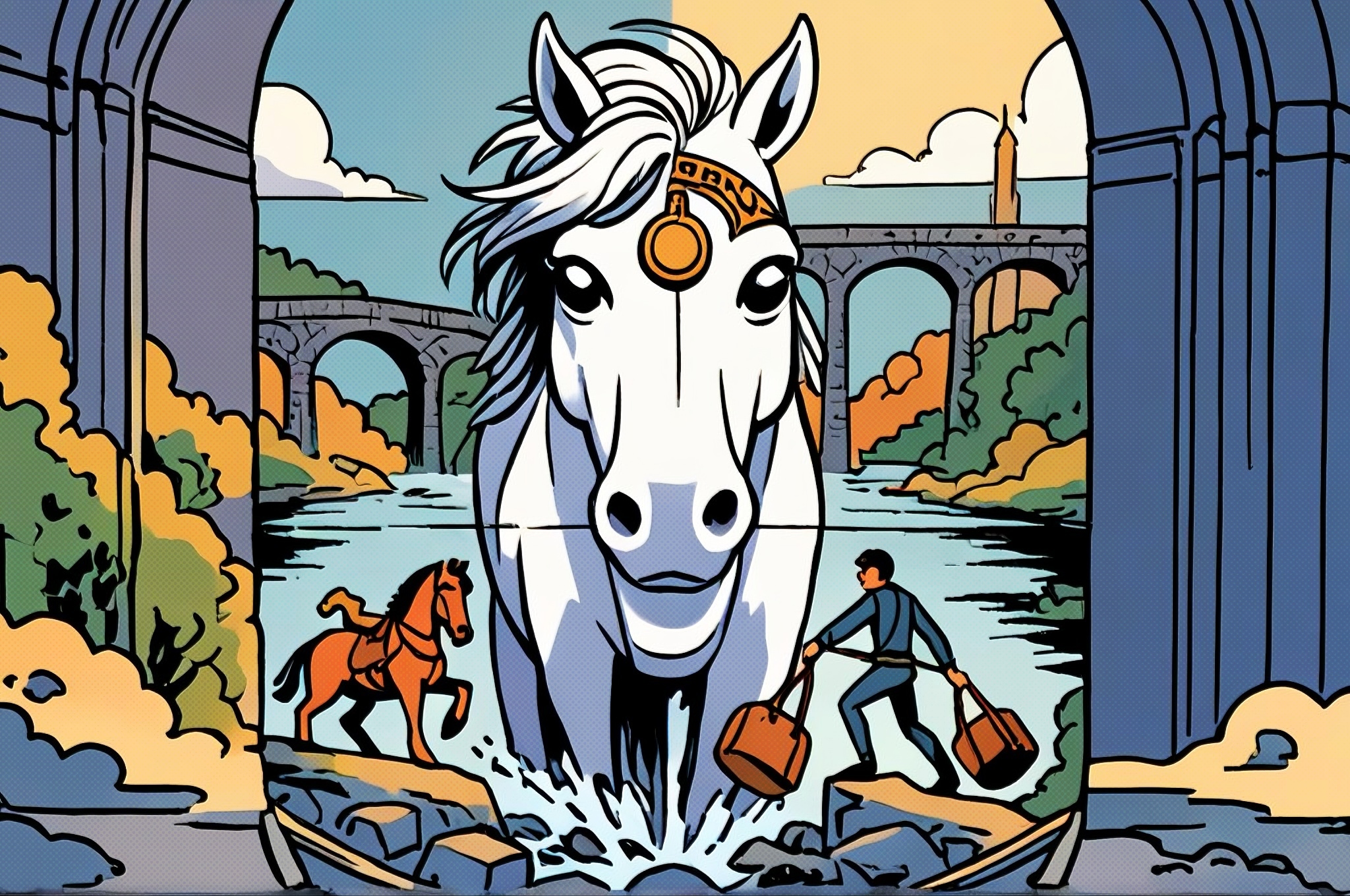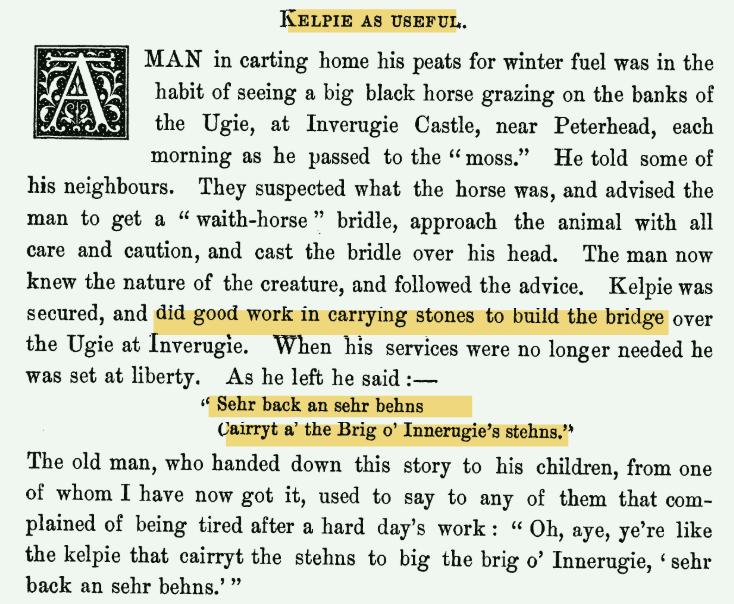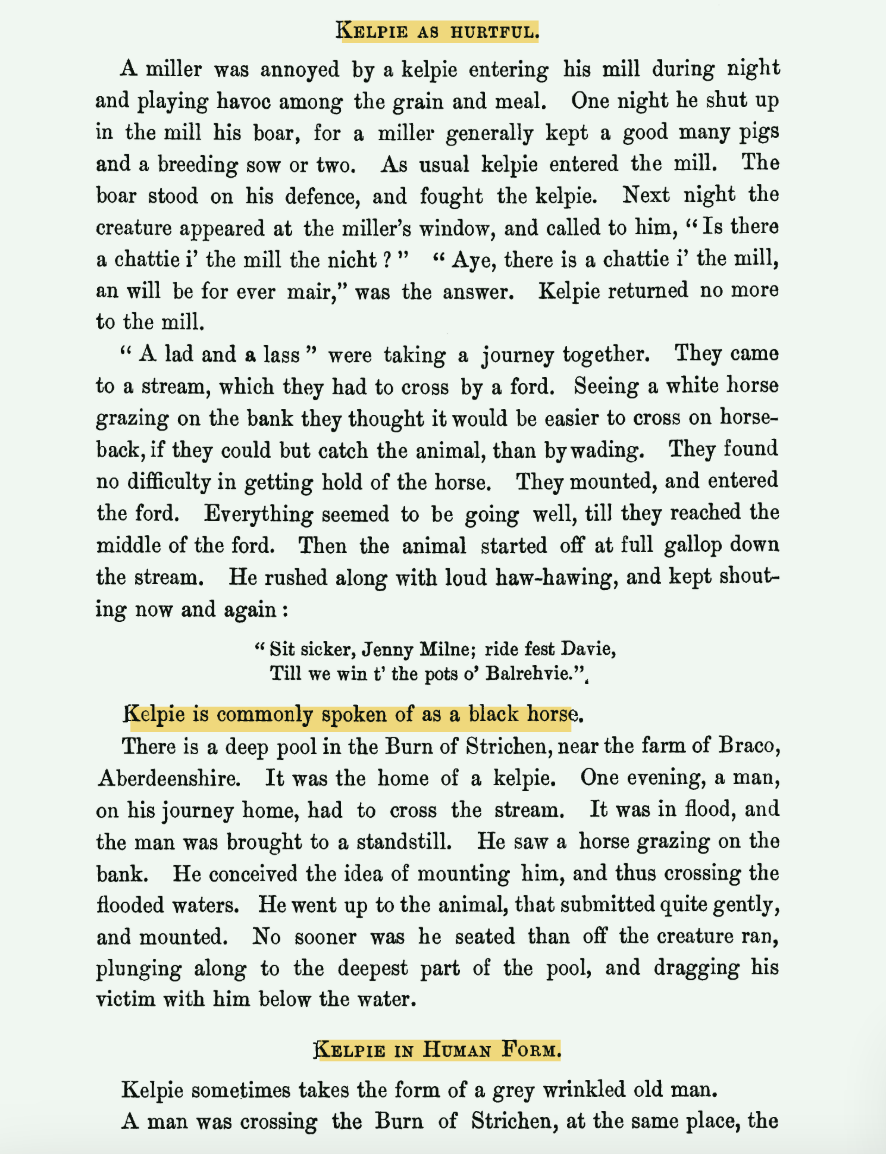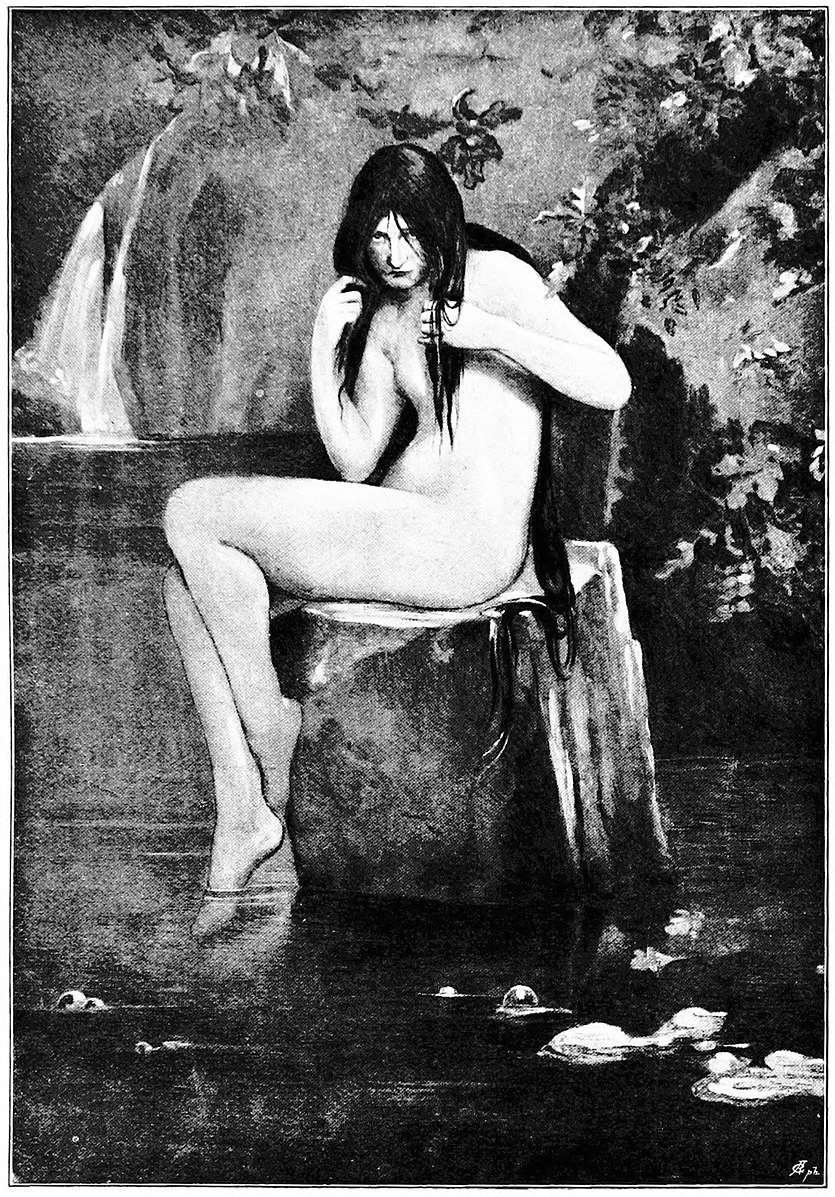WEEK(FLEXIBLE) SICP: THE MANY FACES OF KELPIE

The Kelpie, a legendary water spirit in Scottish folklore, has evolved in both form and meaning. Traditionally depicted as a malevolent creature that lures travelers to their doom, it also appears as a force of labor and industry in Walter Gregor’s 1883 account (Kelpie Stories from the North of Scotland).
Kelpie as a labour force Kelpie as a labour and industrial force
Walter Gregor’s multifaceted rendition of the Kelpie, written in 1883, tells how a captured Kelpie was used to assist in the construction of a bridge over the River Uigi near Inverurgy Castle. In this version, the Kelpie, usually seen as a threat, is transformed into a figure of labour – carrying heavy stones to help humans build infrastructure. Upon being released, Kelpie wails in a Scottish dialect, signalling his exhaustion:
” Sehr back an sehr behns,
Cairryt a‘ the Brig o’ Innerugie’s stehns.”
(Sore back and bones, having carried all the stones for Innerugie’s bridge).
This aspect of the Kelpie myth highlights an important shift in its role – from supernatural threat to allegory of human labour. It is intertwined with labour and Scotland’s evolving relationship with waterways.
Kelpie as a Symbol of Danger and Mystery
Despite these reinterpretations, the darker aspects of the Kelpie legend remain dominant in Scottish folklore. Traditional myths frequently depict the Kelpie as a trickster, appearing as a beautiful horse grazing by a riverbank, only to ensnare unsuspecting riders and drag them into the depths. This sinister nature is captured vividly in two well-known paintings:
The Kelpie (1913)–Herbert James Draper
This oil painting emphasizes the Kelpie’s eerie, magical qualities, portraying it as a mystical yet dangerous force lurking within Scotland’s waters. Draper’s depiction focuses on the supernatural elements of the legend, reinforcing the creature’s role as a predator of the unwary.
The Kelpie (1895)–Thomas Millie Dow
Dow’s work takes a more narrative approach, illustrating the Kelpie’s dual nature as both human and horse. This representation aligns with the mythological tradition of the Kelpie as a shapeshifter, capable of deceiving and entrancing its victims before leading them to their demise.
References
Gregor, Walter. Kelpie Stories from the North of Scotland. The Folk-Lore Journal 1, no. 9 (1883): 292–94. http://www.jstor.org/stable/1252794.
The Kelpie. Oil painting. Accessed February 23, 2025. https://artuk.org/discover/artworks/the-kelpie-102486.
The Kelpie. Oil painting. Accessed February 23, 2025. https://commons.wikimedia.org/wiki/File:The_Kelpie_by_Thomas_Millie_Dow.jpg.
WEEK(FLEXIBLE) SICP: THE MANY FACES OF KELPIE / Tianyi Chen / Curating (2024-2025)[SEM2] by is licensed under a
WEEK(FLEXIBLE) SICP: THE MANY FACES OF KELPIE / Tianyi Chen / Curating (2024-2025)[SEM2] by is licensed under a







